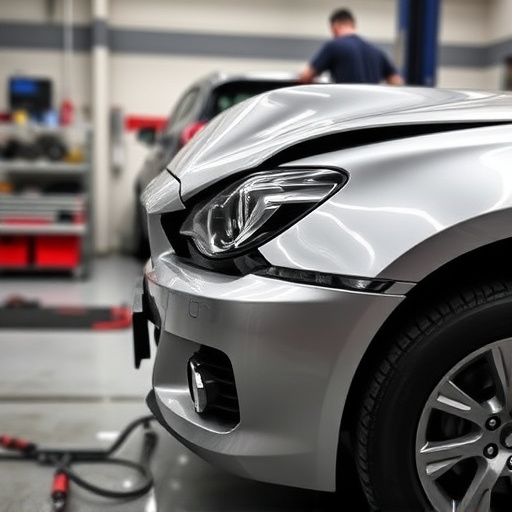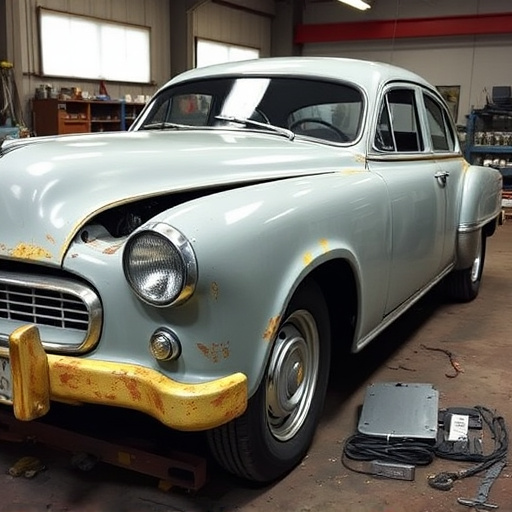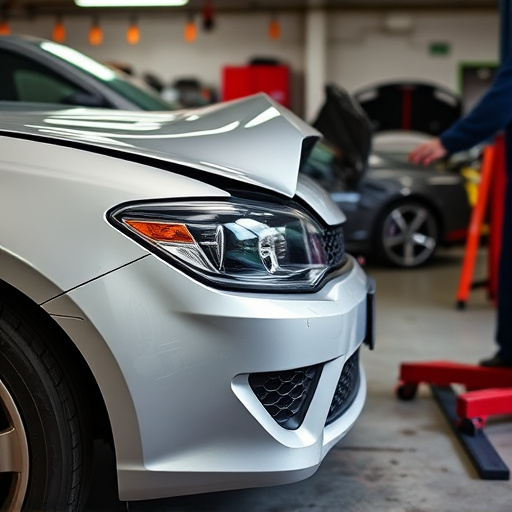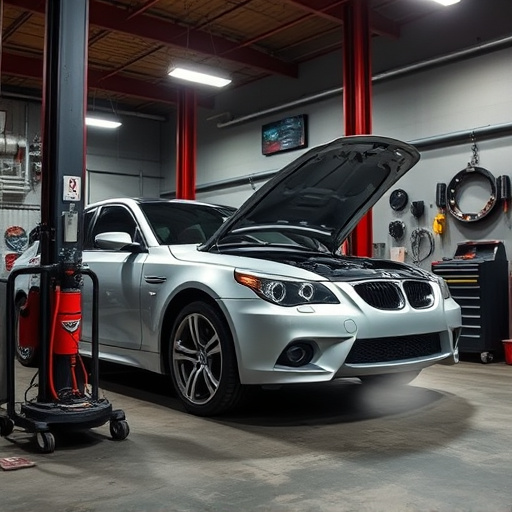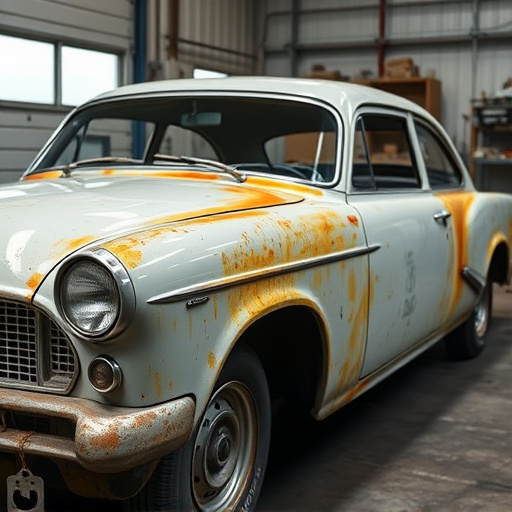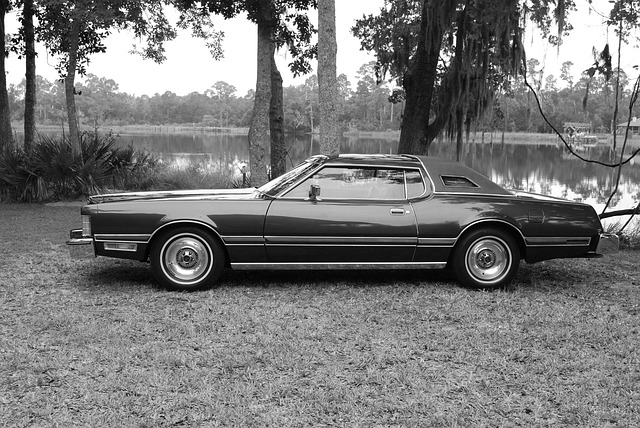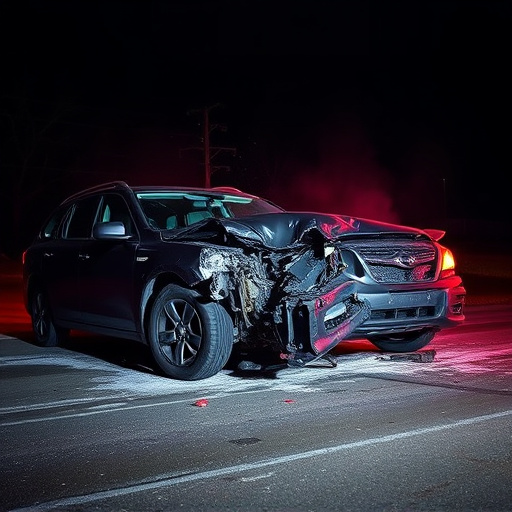Mastering layering techniques in specialty paint application is key to achieving superior results in automotive repairs like glass replacement and bumper restoration. This process involves applying thin coats of paint that build upon each other, ensuring structural integrity, blending colors, maintaining uniform textures, and enhancing durability. In collision repair shops, this method transforms outcomes, preventing chipping and ensuring long-lasting aesthetics, making it indispensable for achieving seamless bondings in dent and scratch repairs.
In the realm of specialty paint application, mastering the art of layering is paramount. This technique significantly enhances aesthetic appeal and durability, transforming bland surfaces into vibrant displays. Understanding basic layering principles and employing best practices ensures optimal results. By delving into the benefits and techniques, professionals can achieve exceptional outcomes, elevating their craft in this competitive field. Discover how strategic layering becomes a game-changer for captivating specialty paint applications.
- Understanding Layering Basics in Paint Application
- Benefits of Layering for Specialty Paint Results
- Techniques and Best Practices for Effective Layering
Understanding Layering Basics in Paint Application
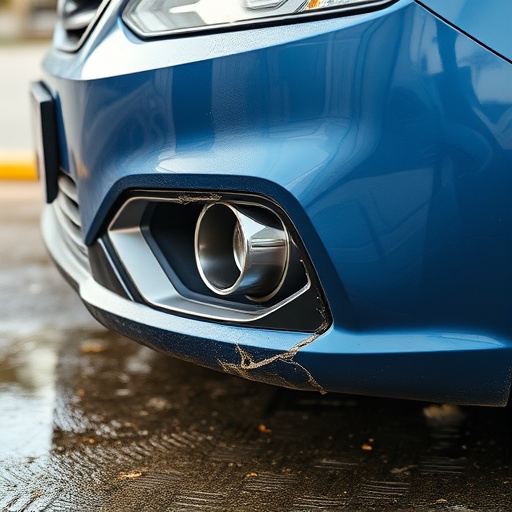
In the realm of specialty paint application, understanding layering is akin to mastering a complex symphony. Each coat of paint serves as a distinct layer, meticulously building upon the previous one. This process, often referred to as layering, is crucial for achieving optimal results, especially in auto glass replacement or bumper repair scenarios where precision and durability are paramount. By carefully applying multiple thin layers, professionals can ensure that the final finish is not just aesthetically pleasing but also robust enough to withstand the rigors of daily driving.
Layering involves more than simply adding coats of paint; it requires an understanding of how each layer interacts with the substrate. This scientific approach ensures that colors blend seamlessly, textures are uniform, and the overall durability is enhanced. For instance, in a collision repair shop, layering is essential for repairing dents and scratches on vehicle bodies, allowing them to look as good as new while providing long-lasting protection against future damage.
Benefits of Layering for Specialty Paint Results
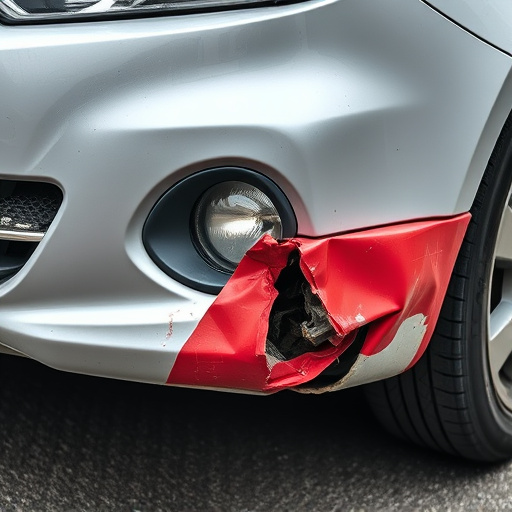
In the realm of specialty paint application, layering is a game-changer that significantly enhances the final results. This meticulous process involves applying multiple thin coats of paint, allowing each layer to dry before adding the next. By embracing this technique, professional painters can achieve a smooth, even base for superior color accuracy and durability. The benefits are manifold: from minimizing imperfections and enhancing adhesion to preventing chipping and ensuring long-lasting aesthetics.
For services like vehicle repair, where precision and quality are paramount, especially in cases of car dent repair or luxury vehicle repair, layering becomes an indispensable tool. It enables paint to bond strongly with the underlying surface, resulting in a seamless fusion that matches the original finish perfectly. This attention to detail not only preserves the vehicle’s appearance but also ensures its resale value, making it a crucial step in any professional paint job.
Techniques and Best Practices for Effective Layering
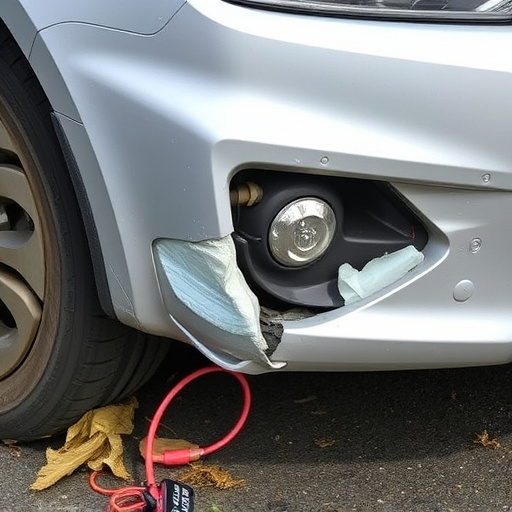
Creating a flawless finish with specialty paint application relies heavily on effective layering techniques. Start by preparing the surface thoroughly, ensuring it’s clean, dry, and free of any contaminants. This foundational step is crucial for achieving long-lasting results. Next, apply base coats carefully, allowing each layer to dry completely before adding subsequent coats. This process builds a strong, even base that minimizes imperfections and ensures color consistency.
For optimal results in specialty paint applications, such as those needed for bumper repair or auto body work, consider these best practices: use high-quality paints tailored to the specific vehicle material; maintain consistent application thickness; and employ crosshatching techniques with a fine brush for intricate details. Remember, patience is key – allowing adequate drying time between layers prevents blending issues and promotes a professional finish that outlasts even the toughest car collisions. Think of it as building a symphony of layers, each contributing to the final masterpiece of your auto repair near me work.
Layering is a fundamental technique in achieving exceptional results with specialty paint applications. By understanding the basics, recognizing the benefits, and employing best practices, professionals can significantly enhance the quality, durability, and aesthetic appeal of their work. This approach ensures that each layer contributes to a seamless, vibrant finish, making it indispensable for any successful specialty paint project.
